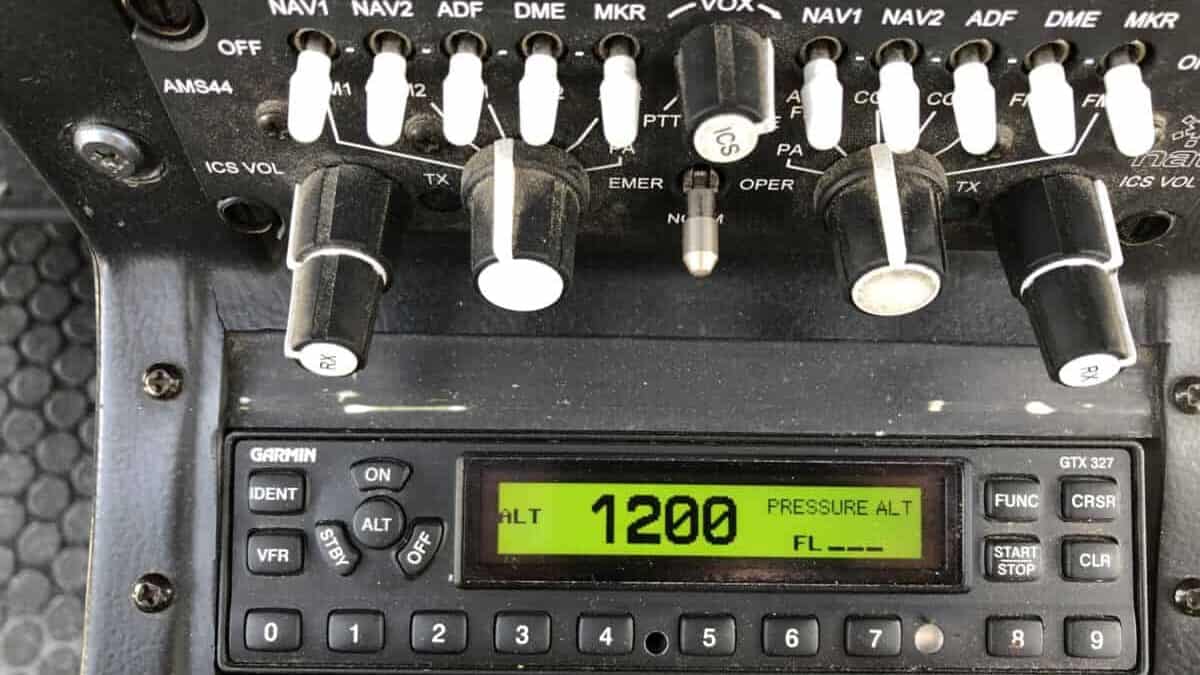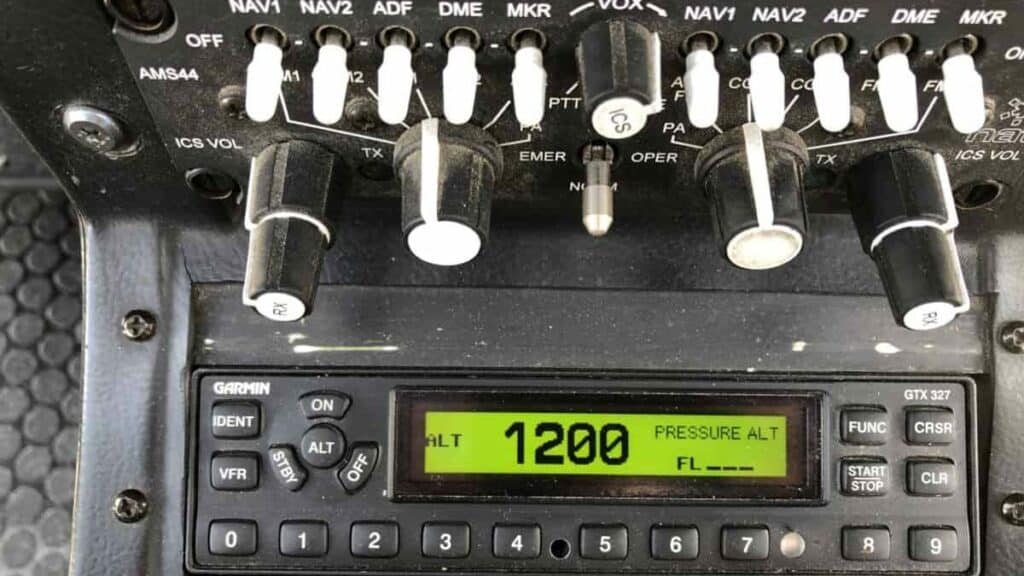
As a passenger have you ever wondered how air traffic control can monitor and differentiate between hundreds of different aircraft all flying in the same airspace at any given time, especially when the clouds are low or it is nighttime and they are unable to see them?
The answer is a small electronic device that is fitted into all commercial and most private aircraft. It is called a Transponder that is fitted into the aircraft.
I remember hearing the word ‘Transponder’ when I first began learning to fly and I had no idea what it was so this is what I teach students.
What is a Transponder?
A transponder is a device that responds to each pass of an airport’s Radar. It tells the radar system the registration # of the aircraft, the altitude it is at, and with each sweep of the radar, updates the aircraft’s position & if it’s changing altitude. It can also issue alerts to ATC from the pilot.
The term transponder is short for “Transmitter – Responder”. It is an electronic device fitted in the aircraft that transmits a 4-digit “squawk code” upon interrogation by the ATC radar each time the rotating radar signal sweeps past the aircraft. This code contains information about the aircraft such as call sign, altitude, groundspeed, etc. This information is then displayed on the air traffic controller’s radar screen.
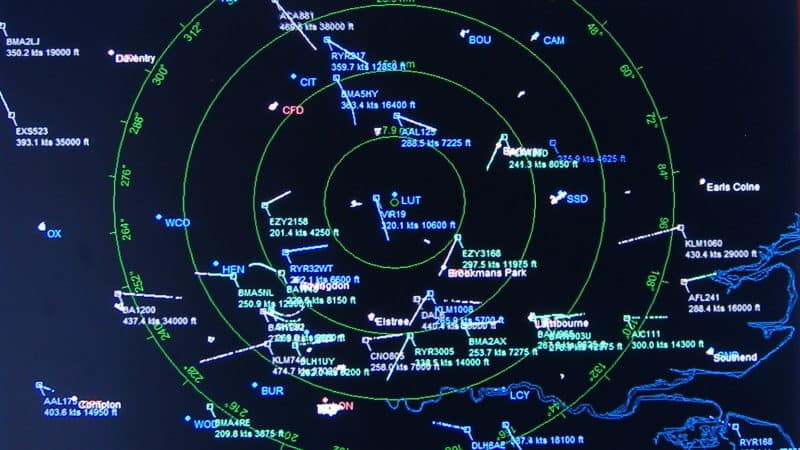
Each aircraft equipped with a transponder allow the air traffic controllers (ATC) to assign details to the aircraft on its screen:
For example on the screen above:
In the top left of the image there is flight BMAZLJ:
This aircraft will have been assigned a 4-digit squawk code (More on this later) when the pilots first checked in with Air traffic control before being pushed back from the gate. The pilots enter the code into their transponder. The air traffic controller assigned the aircraft flight number to that 4-digit code:
Eg:
Squawk Code of 3257, then gets entered into the ATC computer as ‘BMAZLJ‘
This makes it really easy to see where that flight is at any time. At the time the photograph was taken flight BMAZLJ is heading Northwest bound, at 19,000 feet with a ground speed of 350.2 knots. The diamond is the aircraft and the tail represents its last few positions to show its direction of flight.
The transponder system is made up of the Transponder Unit which is the panel mounted in the cockpit. This houses all of the electronics. It also requires an antenna to be mounted on the outside of the fuselage to intercept and transmit radio signals.
Transponders also play a vital role in the TCAS (Traffic Collision And Avoidance System). The TCAS system is installed in modern aircraft and helps prevent midair conflicts by issuing aural and visual alerts to pilots. TCAS is solely dependent on the transponder system.
TCAS acts like a mini radar and sends out interrogation signals from the aircraft. When another aircraft is in the area its transponder responds to this interrogation and sends its data to the requesting aircraft. The TCAS system then decodes this information and places it on a screen in the cockpit for the pilots to see:
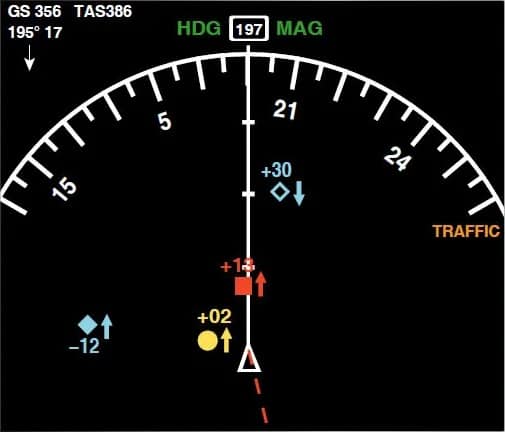
TCAS Symbol Key:
- White Outlined Triangle – Your aircraft
- Red Square – RA – Aircraft 1,300 ft above and climbing in front of you
- Yellow Circle – TA – Aircraft to your left, 200 ft above and climbing with you in the same direction
- Blue Filled Diamond – Proximate Traffic – Aircraft to your left 1,200 ft below and climbing with you in the same direction
- Blue Outlined Diamond – Other Traffic – Aircraft ahead 3,000ft above and descending towards you
There are basically 2 versions of TCAS:
One which just shows the traffic advisory (TA), it displays the other aircraft’s data, shows the position of other aircraft, and leaves it to the pilot to decide to what action to take to maintain separation.
A newer version is the one that detects the traffic and gives traffic advisory (TA) and when crucial, also provides resolution advisory (RA). By resolution advisory, I mean that it verbally announces to the pilot to go left/right/climb/descend and these advisories have priority over the air traffic controller’s command.
In other words, whenever a situation arises where ATC asks the pilot to go left, and TCAS gives a RA to go right, the pilot will have to go right. This helps pilots avoid each other in the event of a mistake by an air traffic controller.
If the transponder is switched off, faulty for any reason, or does not have one fitted at all, the aircraft will be invisible to other aircraft in the vicinity.
One such incident resulted in a midair collision between an Embraer private jet and a Boeing 737 over Brazil. The crew of the Embraer private jet did not realize that for some reason their transponder was turned off and as a result, they were not visible as a potential threat to other aircraft around them.
This resulted in a collision with a Boeing 737. The Embraer private jet managed to land at a military field where the occupants were detained, unfortunately, the Boeing 737 crashed in the Amazon jungle with none of the passengers or crew surviving the crash.

Join My Newsletter & Get Great Tips, Information and Experiences To Help You Become a Superb Pilot!
How Does A Transponder Work?
A transponder works by passing digital information to any radar signal that it receives. The transponder takes flight data from the aircraft sensors and sends it with each interrogation from a radar, whether that be a ground-based or aircraft-based radar. Transponders only pass data outward.
Before we delve further into the intricacies of transponders, we must understand the types of radars first. Radar stands for RAdio Detection And Ranging.
Radar can be divided into two types:
- Primary
- Secondary
Primary Radars transmit radio waves that bounce back after hitting an object, the time taken for the wave to return is used to calculate the distance of the object from the radar. The radar antenna constantly rotates through 360° and the direction the radar antenna is pointing when the signal is received back is the location the aircraft is in from the radar. This is what places ‘The Diamond’ icon on the radar controllers screen.
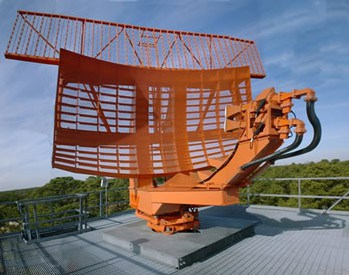
However, it uses antiquated technology and has drawbacks.
Primary radar cannot decipher what it sees. it just picks up any object in the sky, therefore anything like flocks of birds or really heavy rain cells can create a radar return.
Primary Radar is the large, lower antenna in this photo. The antenna mounted above it is the Secondary Radar antenna.
Secondary Surveillance Radar (SSR) uses electronic pulses to interrogate the target aircraft. It is the SSR that gathers the flight data from the aircraft to display with the aircraft target on the air traffic controllers’ screen.
These ground-based radars and antennae like you see in the photo are slowly being updated and replaced. Typical radars now look like this:
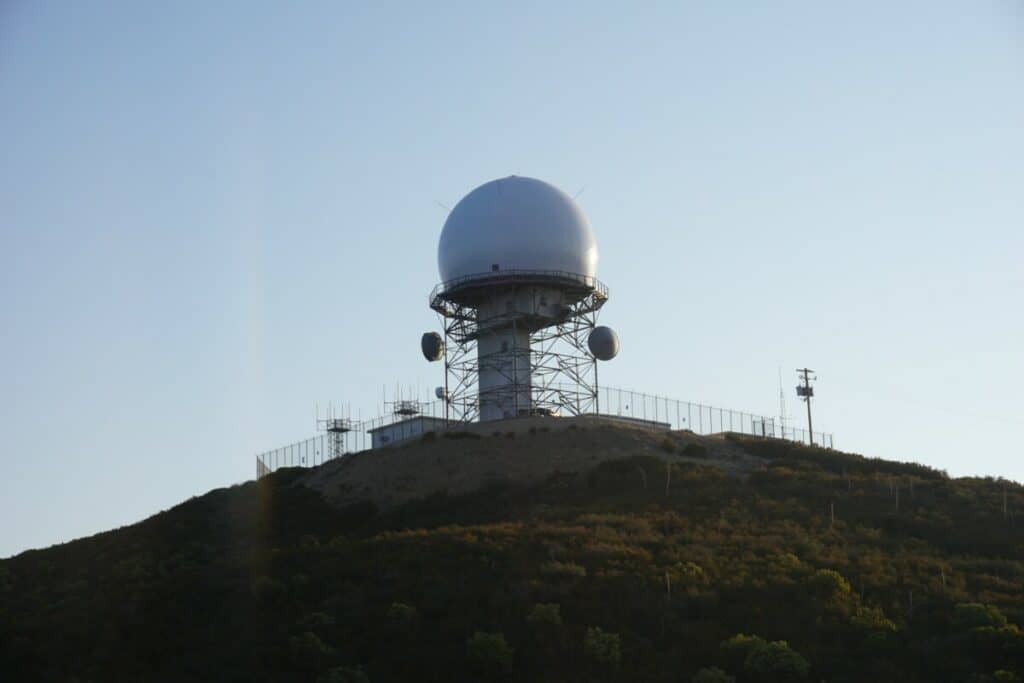
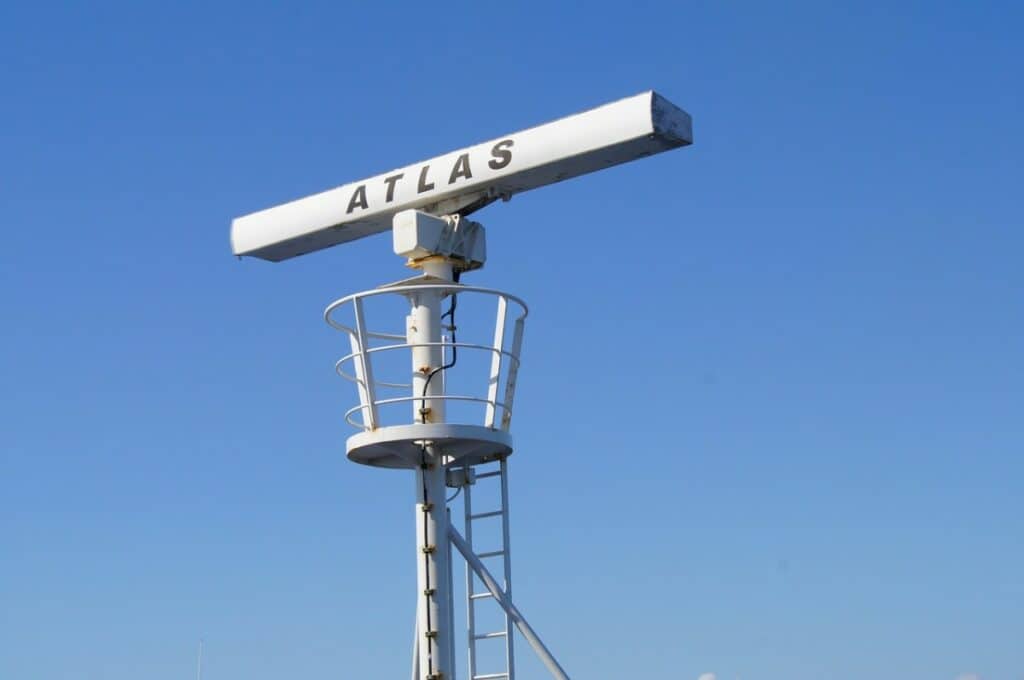
So now the aircraft side…
For Commercial Airliners:
Prior to pushback, when the aircraft is at the gate, the pilots request a clearance known as an IFR clearance. As part of this clearance instruction, the air traffic controller will assign the pilot a 4-digit code known as the Squawk Code. The pilot will type this code into their transponder ready for departure (PRESET BOX):
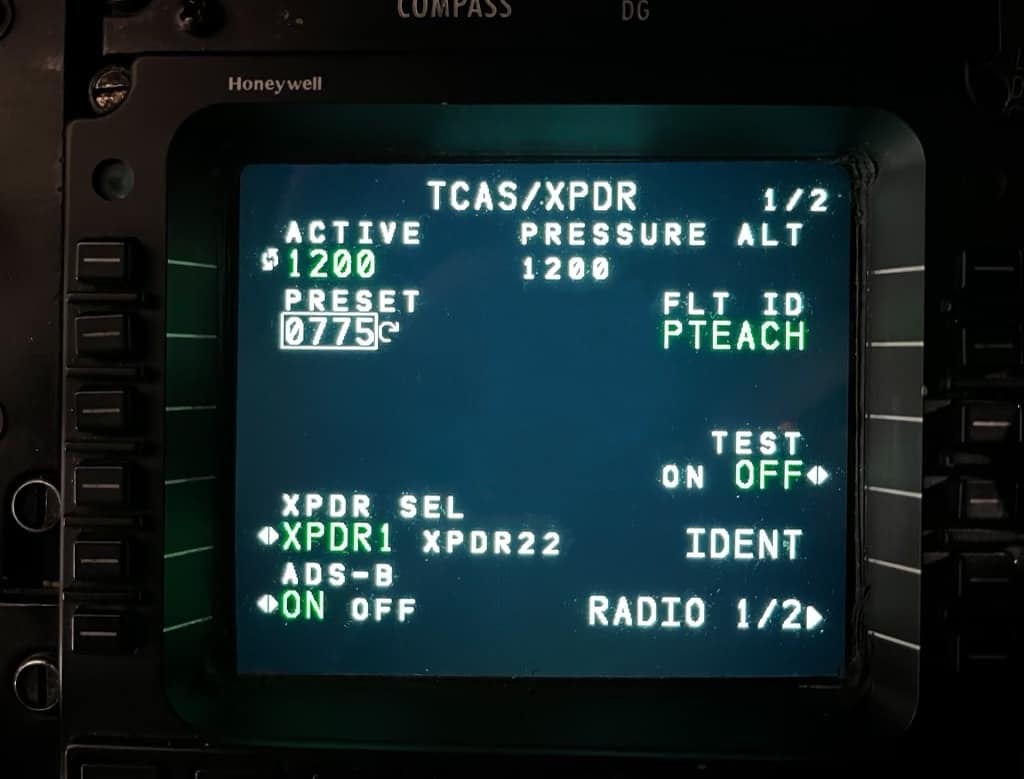
For Helicopters and Small Aircraft:
Before the pilot begins to move from their hanger they too must obtain permission from air traffic control. During this initial contact, the air traffic controller MAY issue the pilot to input a certain squawk code or the pilot will fly under the generic code of 1200.
This code is used for all pilots flying under Visual Flight Rules.

Each aircraft within that air traffic controllers sector is assigned a unique squawk code so that each aircraft can be identified easily on departure. During flight as the aircraft passes into a different airspace sector, the new air traffic controller looking after that sector may assign the aircraft a new squawk code to which the pilot must enter.
If you would like more information on VFR and IFR flight rules please read this:
What is VFR & IFR? What are their differences?
Transponders have 3 mode capabilities depending on their age and sophistication:
1. Mode A:
This is the most basic type of transponder system. These transponders only transmit the aircraft’s squawk code to the radar screen. They are most commonly found in old, private aircraft.
2. Mode C:
Mode C capability allows the radar controller to see the aircraft’s pressure altitude information along with its squawk code. These were by far the most common in small commercial and privately-owned pleasure aircraft.
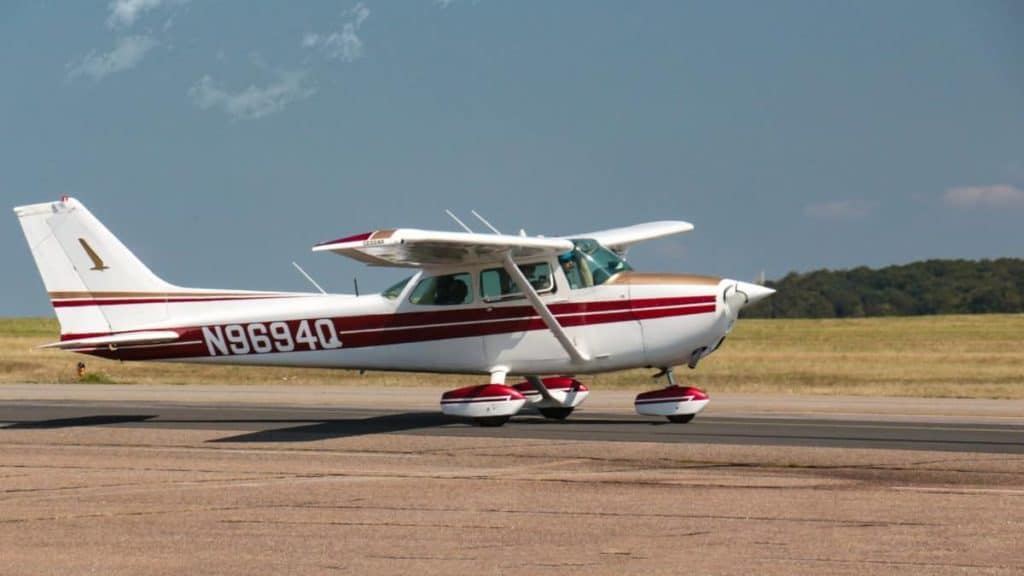
3. Mode S:
Mode S capability is now found on all commercial transport aircraft and private aircraft that wish to fly within controlled airspace. It is the most advanced mode out of all the three modes available. These systems support other systems such as TCAS and ADS-B (Automatic Dependent Surveillance-Broadcast).
ADS-B is the latest surveillance technology that is replacing Primary and Secondary Radar. It is satellite-based and far more accurate and provides more capabilities between aircraft and controllers.
It is now a legal requirement for aircraft to have an ADS-B capable transponder when operating within Class A, B, C, or E airspace.
Learn More…
Try These Articles:
* How Do Pilots Know When To Takeoff?
* Aircraft Cockpits: Why are there so many buttons!!?
When is a Transponder Used or Required?
An aircraft must be fitted with and have it turned on when operating above 10,000 feet above mean sea level but not within 2,500 feet above the ground, like in mountainous terrain. Also, within 30nm of a Class B airspace when below 10,000ft MSL and within all Class C airspace when below 10,000ft MSL.
You would think that it would be law requiring every aircraft to have and use a transponder but that is not the case, although I wish it was.
Transponders are an expensive item and for owners who like to fly around the wilderness and stay away from populated areas then the need to have one fitted is not worth the cost. For aircraft regularly operating in and out of airports there are a few rules:
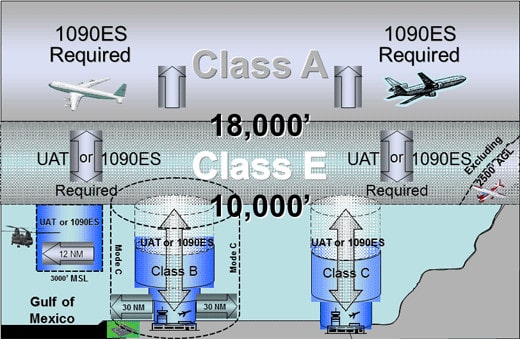
With Mode S ADS-B in full effect now here are the requirements for when a transponder is required:
Uncontrolled Airspace: No Transponder required
Class A Airspace: ADS-B Transponder
Class B Airspace: ADS-B Transponder when flying within 30nm up to 10,000 feet above Mean Sea Level (MSL)
Class C Airspace: ADS-B Transponder when flying within up to 10,000 feet MSL
Class D Airspace: Mode C or ADS-B Transponder when flying within
Class E Airspace: ADS-B Transponder
Normally, transponders are switched on before entering the active runway and switched to standby mode once vacating the runway after landing. However, with the passage of time, airports have started utilizing technologies such as surface movement radar and guidance which requires that the transponder be switched on once the pushback commences.
This technology allows ground controllers to track aircraft as they taxi. This has been a great step forward in improving safety as some of the world’s largest airports can be a maze to navigate around and when fog reduces pilot visibility to near zero!
What are Squawk Codes?
Squawk codes are 4-digit codes assigned to a pilot from an air traffic controller. They allow the controller to see the aircraft on their radar screen along with information about their position. Each aircraft gets assigned a unique squawk code to allow easy identification on a busy radar screen.
There are two types of squawk code:
- Controller-Assigned Codes
- Pre-Determined Codes
Controller-Assigned Codes
Squawk codes that are assigned by an air traffic controller are unique 4-digit codes that are assigned to each individual aircraft. Two aircraft cannot have the same squawk code within the same airspace. These squawk codes are usually assigned with the initial clearance either before taking off or entering the airspace.
Pre-Determined Codes
The FAA and ICAO (International Civil Aviation Organisation) developed a series of pre-determined squawk codes that can be used not only in the US but also worldwide. Some of them help bring immediate attention to aircraft if there becomes an issue on board.
| Code | Use |
|---|---|
| 1000 | Aircraft Operating under IFR ADS-B |
| 1200 | Aircraft Operating under VFR – Visual Flight Rules |
| 1255 | Aircraft Operating Within Designated Wildfire Operations |
| 1277 | Aircraft Operating Within Search & Rescue Operations |
| 7500 | Aircraft has been Hijacked |
| 7600 | Radio Failure |
| 7700 | Emergency |
Whenever any of the codes marked in red are typed into the transponder by the pilot it brings up an instant alert on the air traffic controller’s radar screen to alert them that the aircraft needs assistance.
Learn More…
Try These Articles:
* Do Pilots Talk to Other Pilots or Aircraft?
* What is an Aircraft APU and What’s it Used For?

